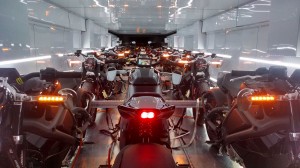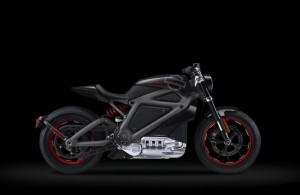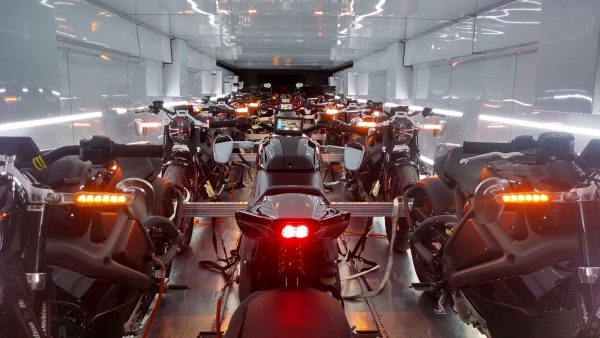 Harley-Davidson got the attention of even non-riders on Thursday with its reveal of “Project Livewire,” a prototype electric motorcycle that it plans to take on tour to get consumer feedback in advance of possible production. Motorcycle mags went crazy spreading the news release across their websites and through social media. Even local TV stations did stories on the marvelous new Harley.
Harley-Davidson got the attention of even non-riders on Thursday with its reveal of “Project Livewire,” a prototype electric motorcycle that it plans to take on tour to get consumer feedback in advance of possible production. Motorcycle mags went crazy spreading the news release across their websites and through social media. Even local TV stations did stories on the marvelous new Harley.
It’s quite possible that Project Livewire generated more publicity for electric motorcycles in one 24-hour period than the Brammo and Zero brands of electric bikes have garnered over years. If I were Brammo and Zero, though, I’d be clapping and cheering Harley on. The old saying that “a rising tide lifts all boats” certainly applies here. As Harley just proved, its iconic name and marketing muscle can bring instant awareness and credibility to what is a small segment of motorcycling.
That is good news for Brammo and Zero. If step one is to get people thinking about electric bikes, which Harley managed to do in an instant, the logical step two for someone now interested in the battery-powered concept is to think “What else is available?”
 The Project Livewire Experience tour kicks off Tuesday at Harley-Davidson of New York in Manhattan, and Harley posted a picture on its Facebook page of the test bikes ready for transport. The buzz about the bike will certainly increase as rider reviews come in.
The Project Livewire Experience tour kicks off Tuesday at Harley-Davidson of New York in Manhattan, and Harley posted a picture on its Facebook page of the test bikes ready for transport. The buzz about the bike will certainly increase as rider reviews come in.
At this point, little is known about the Project Livewire prototype. Harley hasn’t released any info about the power plant or what the bike’s range or mpc (miles per charge) is. Also unknown is how fast it accelerates or its top speed.
However, an executive for Brammo suggests that Harley’s prototype “is woefully inadequate” when compared to existing electric motorcycles that are already on the market, such as Brammo’s Empulse model (with a city range of 128 miles) and Zero’s SR model (with a city range of 171 miles).
“The actual range of this bike is about 3-4 years behind the electric motorcycle industry. The Livewire has a range of about 53 miles in ‘Range’ mode and 30 miles in ‘Power’ mode. This is woefully inadequate for riders,” wrote Adrian G. Stewart, director of marketing for Brammo, in an email response to a list of question submitted by this website following Harley’s announcement.
“Integrating enough battery capacity into a motorcycle frame so that the bike is usable in the real world is a critical success factor,” Stewart continued, ” and Harley appear to have failed in that regard. I would speculate that they decided to sacrifice range in order to create an exciting riding experience for those that attend the roadshow, a controlled environment where range is irrelevant.”
Nonetheless, Stewart added, “It’s certainly interesting to see Harley-Davidson dipping a toe in the water, even though they have decide(d) not to take the plunge for now.”
The Project Livewire Experience tour is specifically designed to get consumer feedback and Harley has emphatically stated that the model is currently “not for  sale.” The company does appear serious about the project, initiating a separate website for the model and advertising job openings.
sale.” The company does appear serious about the project, initiating a separate website for the model and advertising job openings.
What has been noteworthy so far is the way Harley-Davidson has managed so much publicity for Project Livewire from an unaggressive motorcycle press corps. Brammo learned of the Livewire in early April from a story in the British newspaper the “Daily Mail” about the upcoming movie “Avengers: Age of Ultron,” which was filming in Korea. The story contained vibrant pictures of a stunt double for actress Scarlett Johansson riding a motorcycle – a Livewire.
 Ride CT & Ride New England Serving New England, NYC and The Hudson Valley!
Ride CT & Ride New England Serving New England, NYC and The Hudson Valley!


